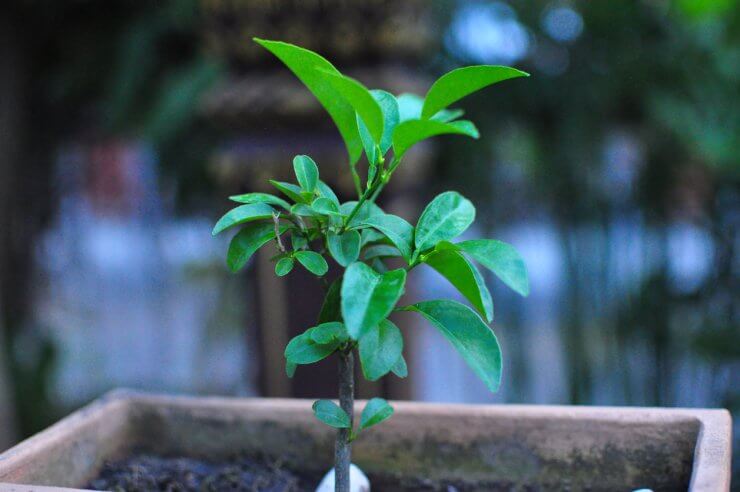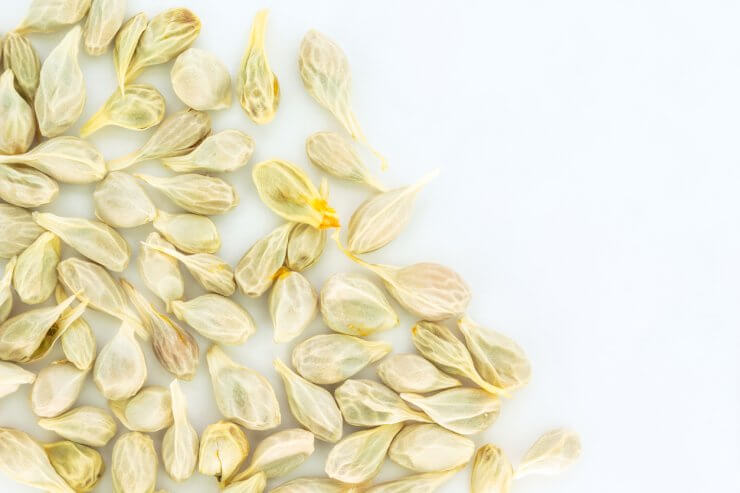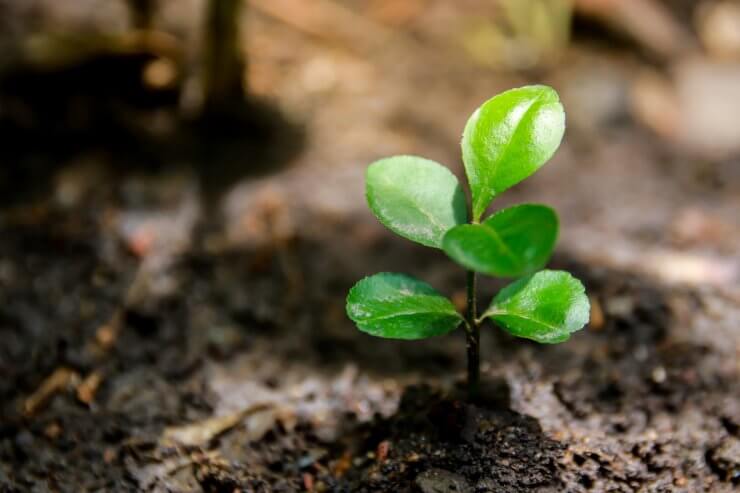
Orange tree sapling
It’s possible to grow oranges from seeds or saplings; the only thing you have to decide is how long you want to nurture a tree until it fruits. Can you grow an orange tree from seed? Sure. Ready to wait about 15 years to find out if the tree will produce fruit? Pull up a lawn chair and get comfy.
Seed Planting Process

Orange seeds
Before you lose yourself in the enthusiasm of growing your own orange tree from a seed, let us write you a reality check: first, your seedling may never produce fruit; and second, your tree may not grow true to seed, so you’re taking a big chance by essentially planting blind.
But, just in case you want to run a little gardening experiment, here’s how to do it.
Gather seeds from an organic orange. Have everything prepared before you decide to plant; orange seeds don’t like to dry out.
Prepare potting soil so you can get your seeds into soil as soon as possible. The germination soil should be sterile; either buy potting soil that’s been pasteurized so that it’s germ-free, or make your own by heating moistened soil on a baking sheet at 160 degrees F for 30 minutes. Heat until the center of the soil reaches 160 degrees F, then allow it to cool.
To prepare your seeds, you need to remove the sugar on them to prevent a fungal attack. You can wash them gently in a sieve at the sink, or you can suck on the seeds until you’ve fully removed the sugar coating the seed. You pick the process.
Put the seeds about a half inch deep into the potting soil, moisten it a bit, and then cover the top with plastic wrap. This is a good time to use a seed starter tray with a plastic lid.
Put the seeded soil in a warm location until the seeds germinate. You could put it on top of your fridge, or use a heating mat designed to help seeds along. You don’t need a lot of light at this point, but make sure you don’t let the soil dry out. Keep the soil moist, but not soggy.
Once the seeds germinate, they’ll need light. So put them in a sunny spot or get out your grow lights. Once you have seedlings with several sets of leaves, you can transplant them to larger pots. Then settle in for the long haul. Get comfy!
Growing from Cuttings or Saplings

Orange tree sapling
So you know you’re not really going to grow your own orange tree from seed; it would take years to find out if the tree would be fruitful, and you could come away empty-handed.
Sometimes gardeners try their hand at rooting a cutting. Of course, the first thing you’ll need is access to the type of tree you want to grow. You need that tree to have a 7-inch section of branch it won’t miss. A first-year growth branch is ideal. And again—you’ll need to be patient.
Find your 7-inch section of branch that has at least two or three healthy nodes. Remove any bottom leaves, leaving about three leaves at the top. Trim the cut end into a point, then dust the cut end with rooting powder.
Plant the cutting in seed starter mix with the branch about an inch deep. It’s a good idea to add a support stake to help the branch remain upright as it roots and grows; you can upgrade the stake as the branch gets taller. Cover the pot with plastic wrap to retain moisture in the soil and to create a warm, humid environment. Don’t let the plastic wrap touch the end of the branch. You might want to put three dowels in the pot to act as supports for the plastic wrap.
After the roots develop, you can take the plastic wrap off. Keep the pot in a sunny, sheltered spot. Keep an eye on root growth. Once the roots nearly fill the pot, it’s time to transplant your young orange tree to a bigger pot.
Keep in mind that you’ll still be in for a long wait before your orange tree starts producing fruit. If you’re not in a rush to get to harvest, this is a growing option.
While growing oranges from seeds, seedlings, or cuttings is certainly doable, it requires more time, care, and patience than purchasing a young tree, where growers have done some of that up-front work for you.
Most orange trees are the result of grafting: a cutting of the preferred type of orange (scion) is grafted onto a compatible rootstock. This is the standard approach at nurseries the world over. By the time you get the young tree, it will be at least a year old, if not older. Of course, the older the tree, the longer it’s been tended, and the closer it will be to bearing fruit!
Have you tried growing oranges from seeds, cuttings, or saplings? Which method do you prefer—and why? Please share your experiences with us.


 Previous
Previous

